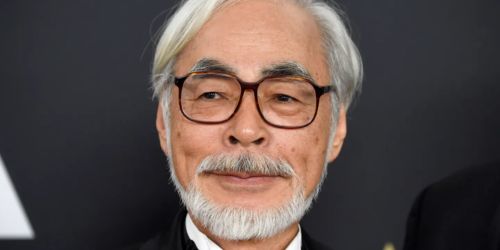Indian Modern Art is a fascinating blend of tradition and innovation, showcasing the rich heritage and contemporary evolution of India’s artistic landscape. It intertwines cultural symbolism with global influences, making it an exciting field for artists, collectors, and enthusiasts. Whether you wish to create, collect, or simply appreciate this art form, understanding this will help you navigate its diverse expressions.
This comprehensive guide will explore the origins, major movements, styles, and ways to engage with Modern art. By the end, you will gain insights into its historical evolution, prominent artists, and the best avenues to experience and collect modern Indian paintings.
Understanding Modern Art
What is Indian Modern Art?
Modern art refers to art produced in India from the late 19th century to the present, characterized by an amalgamation of traditional techniques and modern aesthetics. It signifies a departure from classical Indian art and engages with abstract, figurative, surrealist, and experimental styles. This art form is influenced by changing political, social, and cultural landscapes, blending indigenous styles with Western techniques.
Key Characteristics
- Fusion of Traditional and Contemporary Elements: Indian modern artists blend folk art, mythology, and classical influences with abstract and contemporary themes.

- Emphasis on Expression: Unlike classical art, modern art often conveys personal, political, and philosophical messages.

- Use of Innovative Techniques: From oil painting and acrylics to digital art and installations, modern art is not confined to a single medium.

- Diversity in Themes: This art addresses themes like nationalism, spirituality, gender identity, urbanization, and environmental concerns.

The Evolution of Indian Modern Art
The journey of this art is deeply intertwined with India’s colonial history, nationalist movements, and post-independence transformations. Here’s a look at its key phases:
Early Modern Indian Art (Pre-1947)
During the colonial period, Indian artists were exposed to Western academic art styles. The most significant artist of this era was Raja Ravi Varma, who fused European realism with Indian mythological themes, laying the foundation for modern Indian painting.
The Bengal School and Nationalist Art Movement (1905-1940s)
A counter-movement to Western influences, the Bengal School of Art, led by Abanindranath Tagore, sought to revive indigenous Indian art forms. Inspired by Mughal miniatures and Japanese aesthetics, it played a crucial role in India’s nationalist movement, promoting Swadeshi art.
Post-Independence Era and the Progressive Artists’ Group (1947-1970s)
The Progressive Artists’ Group (PAG), formed in 1947, revolutionized Modern Indian Art by embracing abstraction and experimental techniques. Artists like M.F. Husain, S.H. Raza, F.N. Souza, and Tyeb Mehta redefined Indian painting with bold compositions and global influences.
Contemporary and Modern Indian Art (1970-Present)
From the 1970s onwards, modern Indian art diversified further with the advent of digital art, installation art, and conceptual works. Artists like Anish Kapoor, Subodh Gupta, and Bharti Kher gained international recognition, bridging the gap between traditional Indian themes and global contemporary art.
Major Art Movements in Modern India
- The Bengal School of Art – Advocated a return to traditional Indian aesthetics and spiritual themes.
- The Progressive Artists’ Group – Focused on abstract and experimental forms, rejecting colonial influences.
- Baroda School of Art – Blended academic realism with indigenous narratives, producing artists like Bhupen Khakhar.
- Contemporary Art Movements – Involves installation art, new media, and socially engaged art addressing modern issues.
How to Engage with Modern Art
1. Visit Modern Art Museums in India
To truly appreciate modern art, visit some of the finest museums:
- National Gallery of Modern Art (NGMA) – Located in Delhi, Mumbai, and Bangalore, showcasing a vast collection.
- Kiran Nadar Museum of Art (KNMA) – Focuses on contemporary Indian art.
- Jehangir Art Gallery – A hub for emerging modern artists.
- Kolkata Center for Creativity – A platform for contemporary installations and experimental art.
2. Discover Famous Modern Artists
Some of the most influential figures in modern art include:
- Raja Ravi Varma – The father of Indian modern art.
- M.F. Husain – Renowned for his vivid depictions of Indian culture.
- Tyeb Mehta – Known for his minimalistic and powerful visual storytelling.
- S.H. Raza – Master of geometric abstraction.
- Anish Kapoor – Internationally acclaimed for his sculptural works.
3. Learn About Styles
- Abstract Modern Indian Art – Featuring bold compositions and non-representational themes.
- Indian Gods in Modern Art – Reimagining Hindu deities in contemporary styles.
- Modern Folk Art – A fusion of Madhubani, Warli, and Pattachitra with modern techniques.
4. Buy Modern Indian Art
- Online Platforms – Websites like Astaguru, Saffronart, Kalaspot, and StoryLTD offer curated collections.
- Art Auctions – Leading houses like Christie’s, Sotheby’s, and Pundole’s feature high-value modern Indian paintings.
- Local Galleries – Explore local exhibitions to discover emerging artists.
5. Read Books on Modern Art
To deepen your knowledge, consider these books:
- A History of Modern Indian Art by Partha Mitter.
- Contemporary Indian Art: Other Realities by Yashodhara Dalmia.
- The Progressive Revolution: Modern Art for a Modern India.
Indian Modern Art and Architecture
Modern Art has influenced architecture, merging traditional elements with contemporary design. Notable examples include:
- Le Corbusier’s Chandigarh – A modernist approach to Indian urban planning.
- The Lotus Temple – A blend of Indian spirituality with futuristic aesthetics.
- The Museum of Modern Art, India – Houses experimental architectural projects inspired by modernist principles.
Conclusion
Indian modern art is a dynamic and evolving field that reflects India’s cultural diversity and creative spirit. Whether you are an artist, collector, or admirer, there are endless ways to engage with this art form. Start by visiting museums, exploring the works of renowned artists, and even purchasing a piece of modern art for your collection.
As modern art continues to gain global recognition, now is the perfect time to immerse yourself in its richness and contribute to its legacy. Whether through appreciation, investment, or artistic creation, modern art offers an inspiring journey for all art lovers. For more information visit our website KalaSpot.com






